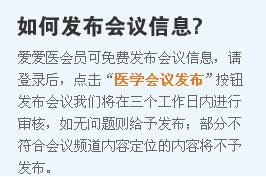在2012年6月15日的第17届欧洲血液学协会大会上,德国Wuerzberg大学的 Max Topp 教授发表了关于急性淋巴细胞白血病双特异性抗体的研究报告,引起广泛关注。

在Ⅱ期剂量范围研究MT103-206中,研究者对 blinatumomab应用于一线标准化疗或异源干细胞移植后复发的前B细胞急性淋巴细胞白血病成人患者中的有效性,安全性以及耐受性进行了评估。
研究中患者使用blinatumomab 治疗28天(4周),停止2周,6周为一个周期,共进行 5个周期。
主要研究终点是完全缓解率(CR)及血液学部分缓解率(CRh*)。次要终点为分子学反应(缓解)率、有效(缓解)时间和总生存率。
次要终点为分子学反应(缓解)率、有效(缓解)时间和总生存率。
研究表明,blinatumomab在全部36名患者中均安全、有效。其中26名(72%)患者在blinatumomab所有考察剂量下均达到了CR/CRh*。除两人外,所有患者都达到分子学缓解。中位生存期9.0 (8.2, 15.8) 个月,中位随访时间10.7个月。
此外,常见不良反应包括发热,头痛,颤抖。重要医学安全事件包括可逆的细胞因子释放综合征和中枢神经系统不良反应。
新闻原文
Positive results with monoclonal antibody blinatumomab for acute lymphoblastic leukaemia patients presented at EHA
Professor Max Topp University of Wuerzberg, Germany, has presented the impressive results with a bispecific antibody for acute lymphoblastic leukaemia patients at the 17th Congress of the European Haematology Association (EHA) in Amsterdam.
The phase II dose-ranging study MT103-206 evaluated the efficacy, safety and tolerability of blinatumomab in ** patients with B-precursor acute lymphoblastic leukaemia who had relapsed following treatment with standard front-line chemotherapy or allogeneic stem cell transplant. Patients received blinatumomab for 28 days followed by two weeks off therapy over a six week treatment cycle, for up to five treatment cycles. Patients received a continuous intravenous infusion of blinatumomab at an initial dose of five or 15 micrograms/m2 per day, escalating to 30 micrograms for the remainder of the treatment. The primary endpoint of the study was the rate of complete remission (CR) and complete remission with partial haematologic recovery (CRh)。 Secondary endpoints included molecular response rate, duration of response and overall survival. All 36 patients were evaluable for efficacy and safety.
Twenty-six of the 36 patients (72 per cent) treated with blinatumomab across all of the tested doses and schedules achieved a CR/CRh. All but two patients achieved a molecular response, meaning there was no evidence of leukaemic cells by polymerase chain reaction. The most common adverse events were pyrexia, headache and tremor. Medically important safety events were reversible cytokine release syndrome and CNS adverse events.
At the time of the **ysis, median survival was 9.0 (8.2, 15.8) months with a median follow-up period of 10.7 months. The median duration of response in the 26 patients who responded to treatment was 8.9 months.

